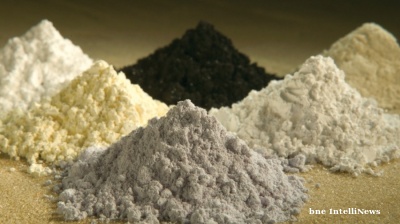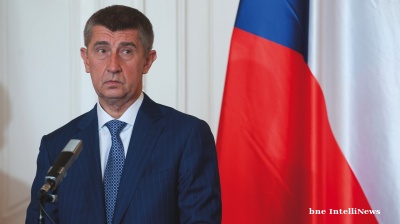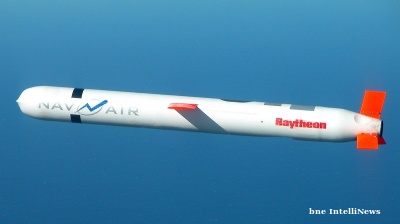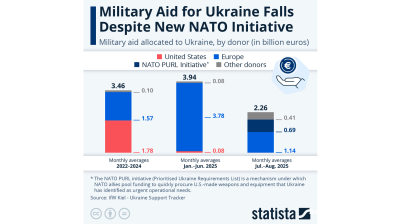When it comes to assessing sentiment towards the Russian stock market there is usually a long list of topics discussed. Currently that includes sanctions risk, the macro-economic trends, both domestic and international politics and, recently, the egregious action taken by Rosneft against Sistema. In reality, at least when it comes to the indices that measure international investor activity in Russia, only one factor has ever mattered: the trend in the price of oil. This year is no different.
Russia has made great progress in broadening the economy away from hydrocarbon dependency and risk. This year the federal budget would balance with an average price of crude at approximately $70 per barrel. The recently published three-year budget expects a deficit of 0.8% of GDP in 2020 based on an assumption of $42 average oil. That is a far cry from the $115 per barrel needed in 2013. It is the same story when it comes to tax revenue. In 2013, hydrocarbon taxes accounted for 52% of all federal budget revenue, while this year it will be less than 40%.
But despite that drift away from hydrocarbon vulnerability, international investors still see Russia primarily as an oil play. In 2016 the price of Brent gained 52.4%. The USDRDX Index, which tracks all Russian DRs listed internationally, gained 52.1%. Over the first half of this year the price of Brent dropped 14.2% and the USDRDX Index lost 14.9%.
In a world where facts play a secondary role to sentiment, the trend in the oil price will continue to play that important sentiment-conducting role for some time to come. Partly that is because most investors see little reason in looking too deeply into the Russia story for now. There is far too much noise and too many risk factors swirling around Russia, especially for the big emerging market money managers in London, Boston and Switzerland to justify looking too far beyond the headlines. Even local investors appear to have lost the will, or the ability, to fight the negative international sentiment. The ruble-denominated MICEX Index was also down by more than 15% through the first half of the year.
The clear message is, at least until the domestic story emerges strongly or external political risks start to peel away, it will be the oil price which determines the volume and direction of investor flows and where the equity indices trade. This is especially the case where ETF funds now dominate emerging market volumes. In that respect, and despite the fact that relative equity valuations are again cheap, the outlook for the market in the second half of this year does not look good. The price of Brent is struggling to stay in the $45 - $50 per barrel range and, barring some major supply disruption, the prospects for the price to return to $54, the average per barrel price over the first five months of this year, look very dim.
The Opec-Russia agreement, which aimed to cut approximately 1.8mn barrels from daily production, worked very well for about six months but has now run its course. Russia earned an additional $2.25bn per month between December and May based on the average price of crude at $54 per barrel rather than at $45 per barrel, i.e. the price crude was trading at prior to the deal announcement.
The reason why the agreement is no longer working is because US shale producers also benefited from the deal. The higher price plus improvements in technology and extraction methods have allowed the US industry to add over 800,000 barrels to daily production (bbl/d) since the low point of late 2016. According to data from the International Energy Agency (IEA), US oil production averaged 13.1mn bbl/d in June and looks set to either continue building on that volume or, at least, holding it.
In addition, both Libya and Nigeria – two countries which were exempted from the November deal because of war disruption – have started to rebuild. Libya produced 820,000 bbl/d in June and is in track to reach 1.0mn by end summer. Its November benchmark was set at 510,000 bbl/d. Nigerian output averaged 1.35mn bbl/d in Q1 but was at 1.6mn bbl/d in June.
Faced again with losing market share, Opec discipline is starting to break down. It is reported that while the Opec countries that signed up to the November deal, and the extension to spring next year, are generally in compliance with production, many are starting to export crude from storage. Hence there is a actually only a small cut in available global supply and that, despite the steady rise in demand, is one reason why oil inventories around the world are sticking close to record highs.
Russia is hosting a meeting with several Opec states in St Petersburg on July 24 to discuss how to stop the oil price falling. In reality there is nothing that any of the countries at that meeting will be willing to do. They are firmly wedged between the proverbial rock and hard place. If they agree to cut additional production, i.e. the only action which might boost the price of oil back to the mid $50s, then US output growth may well accelerate and Opec and Russia will lose even more market share and faster. One cannot imagine any of them wanting to do a favour for the US industry.
On the other hand they could do nothing and accept another period of lower prices in the hope that there will also be a repeat of the drop in US output seen in 2015 and 2016, i.e. as marginal fields become uneconomic. But that would be also very financially painful for Opec states and Saudi Arabia in particular. Recall that the newly appointed Crown Prince Mohammed bin Salam has partially staked his credibility at home on a successful Aramco IPO in 2018. The valuation targeted is predicated on mid-$50 oil and hardly works at sub-$50 oil.
In reality, Russia is in a relatively good position, even though the international investment funds will pile more punishment on the equity indices with weaker oil. Unlike the Opec states, Moscow bit the bullet early on and allowed the ruble to free-float with weaker oil. We now know that the ruble will not be allowed to appreciate should something unexpected happen, e.g. a major disruption in the Venezuelan oil industry, and drive the price of oil higher. A weak ruble exchange rate is accepted by Putin as key to his localisation recovery strategy. But if oil continues to slide the ruble will go right along with it. The weaker currency to a great extent offsets the drop in the oil price for both the Russian oil operators and the federal budget.
At the St Petersburg meeting on July 24th Russian officials will actually be in a much better position than their Opec counterparts. That is because both the budget and the oil producers have the weaker ruble safety net to offset any oil price weakness. Undoubtedly they will offer their Opec guests teas and sympathy at the event but the best advice they could offer is to tell the likes of Saudi Arabia, UAE and others to take a hit on their currency exchange rates. A big one-off devaluation would provide useful compensation for the weaker oil price. Painful as that action might be for many of the Opec states, the alternative of lower oil revenues and an uncompetitive currency would be a whole lot worse.
Opinion

COMMENT: Hungary’s investment slump shows signs of bottoming, but EU tensions still cast a long shadow
Hungary’s economy has fallen behind its Central European peers in recent years, and the root of this underperformance lies in a sharp and protracted collapse in investment. But a possible change of government next year could change things.

IMF: Global economic outlook shows modest change amid policy shifts and complex forces
Dialing down uncertainty, reducing vulnerabilities, and investing in innovation can help deliver durable economic gains.

COMMENT: China’s new export controls are narrower than first appears
A closer inspection suggests that the scope of China’s new controls on rare earths is narrower than many had initially feared. But they still give officials plenty of leverage over global supply chains, according to Capital Economics.

BEYOND THE BOSPORUS: Consumed by the Donald Trump Gaza Show? You’d do well to remember the Erdogan Episode
Nature of Turkey-US relations has become transparent under an American president who doesn’t deign to care what people think.




